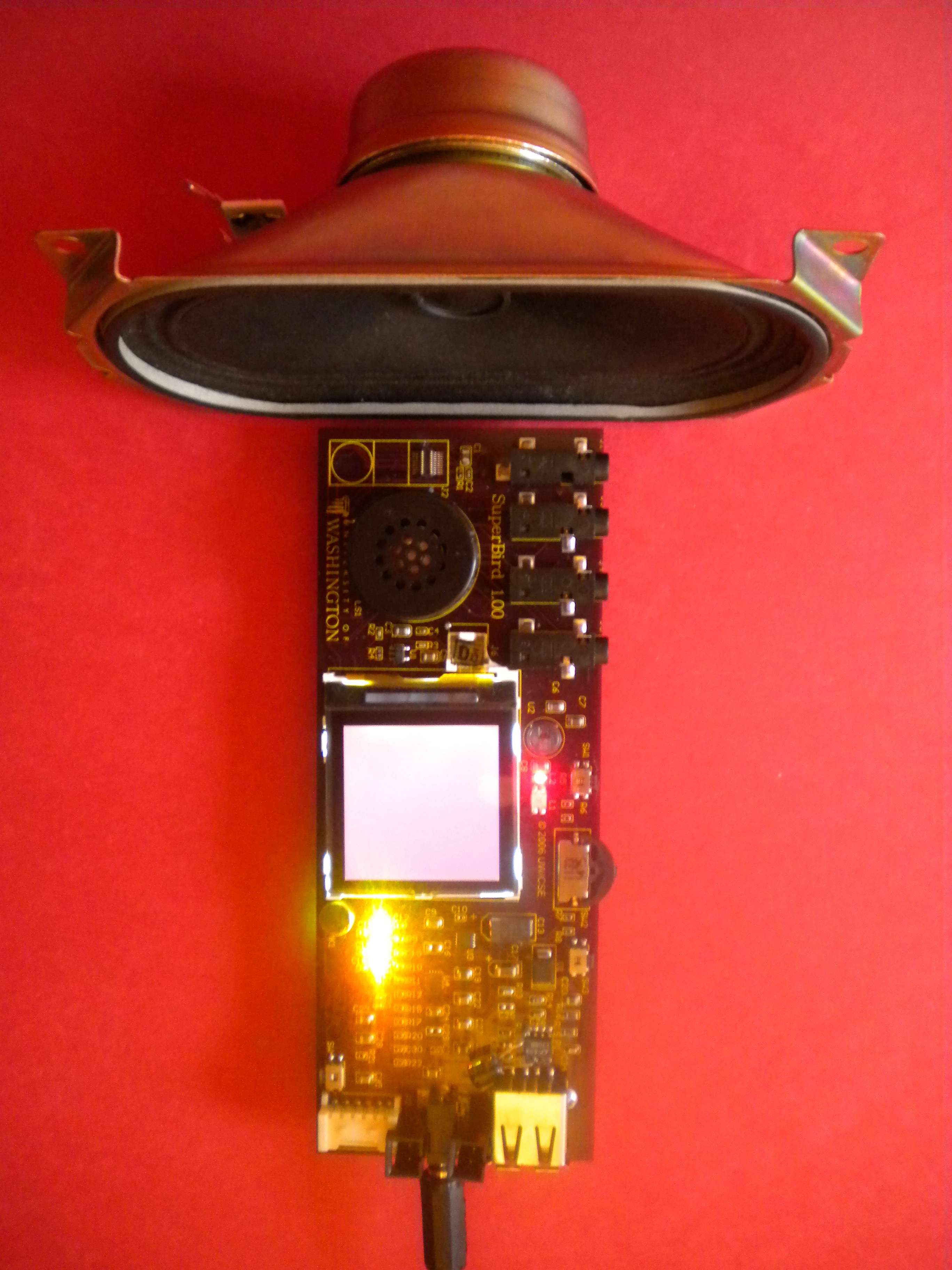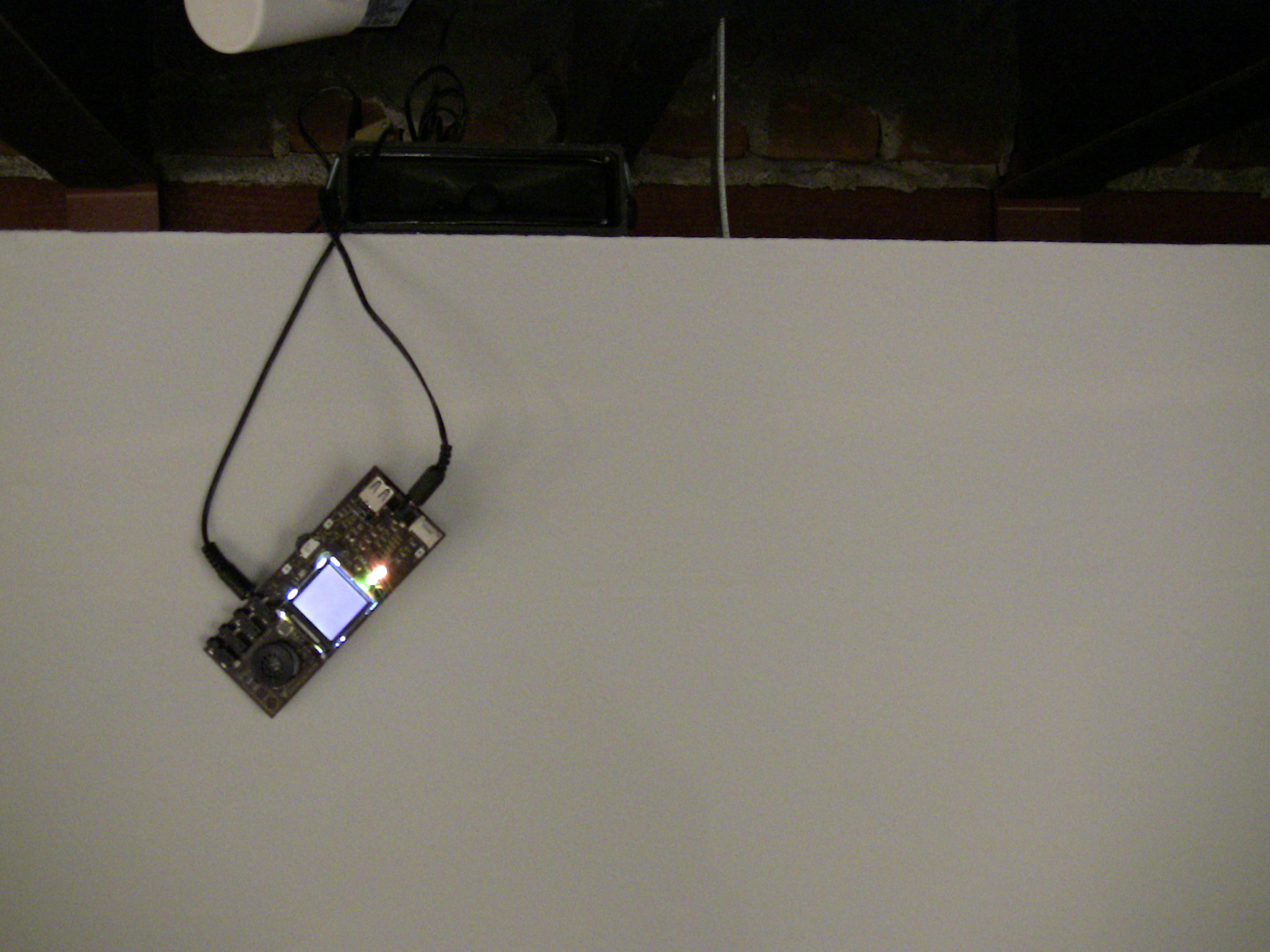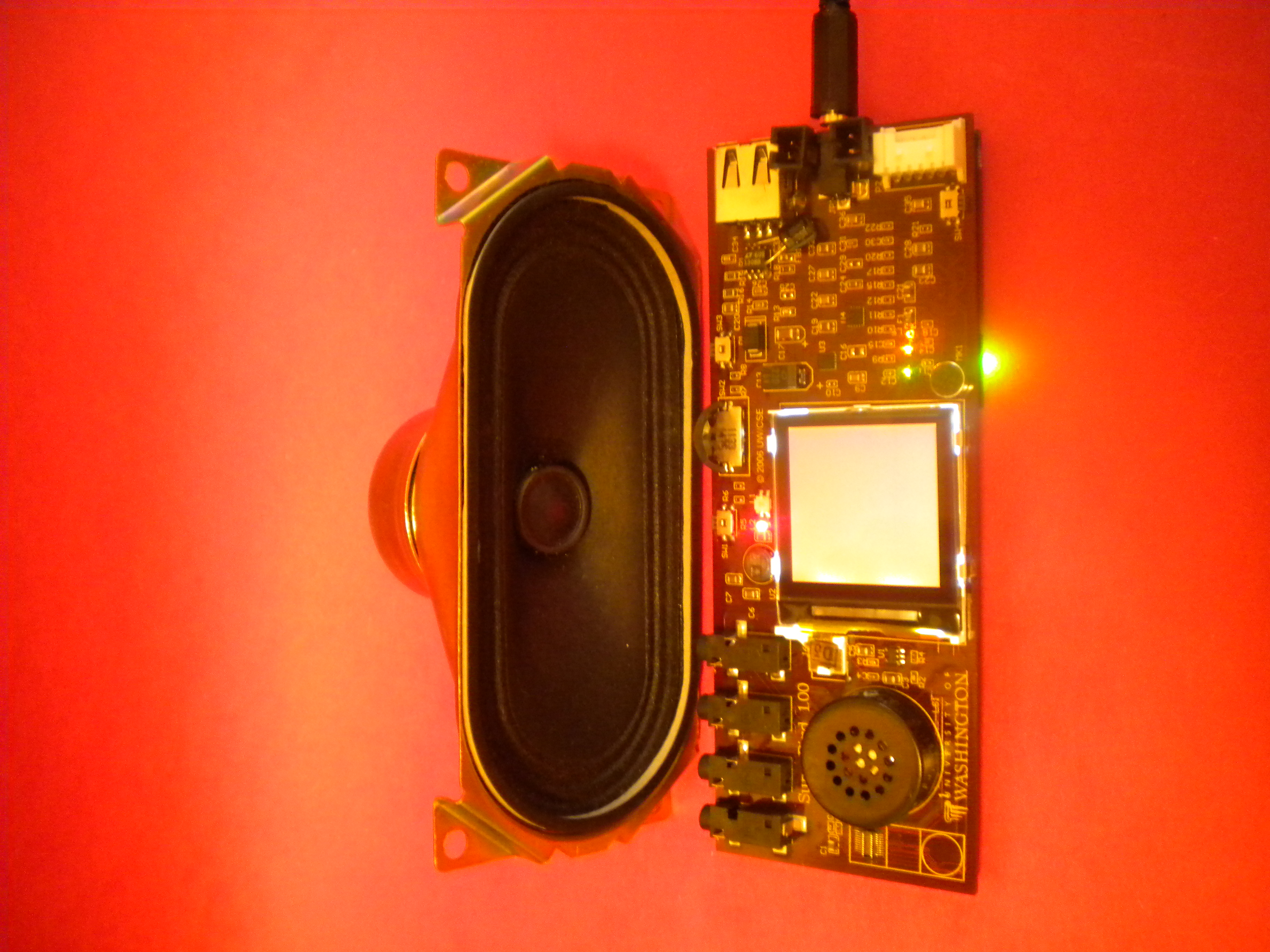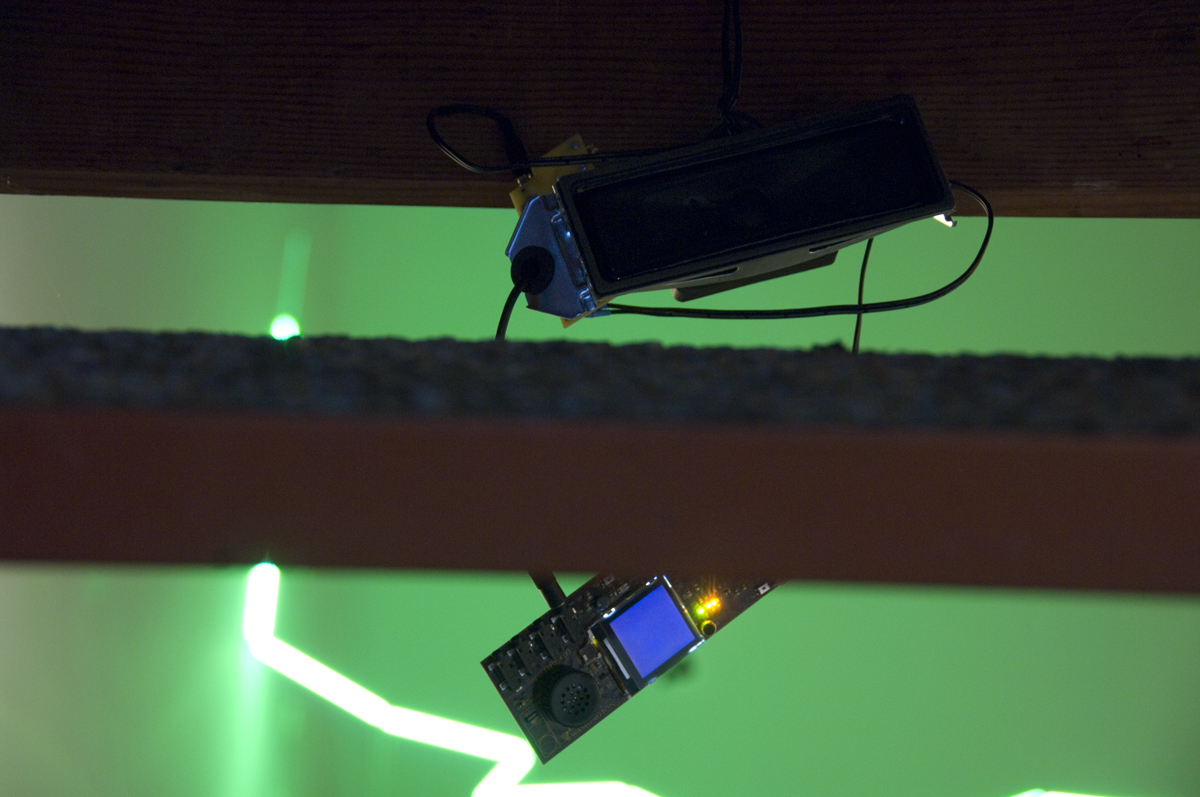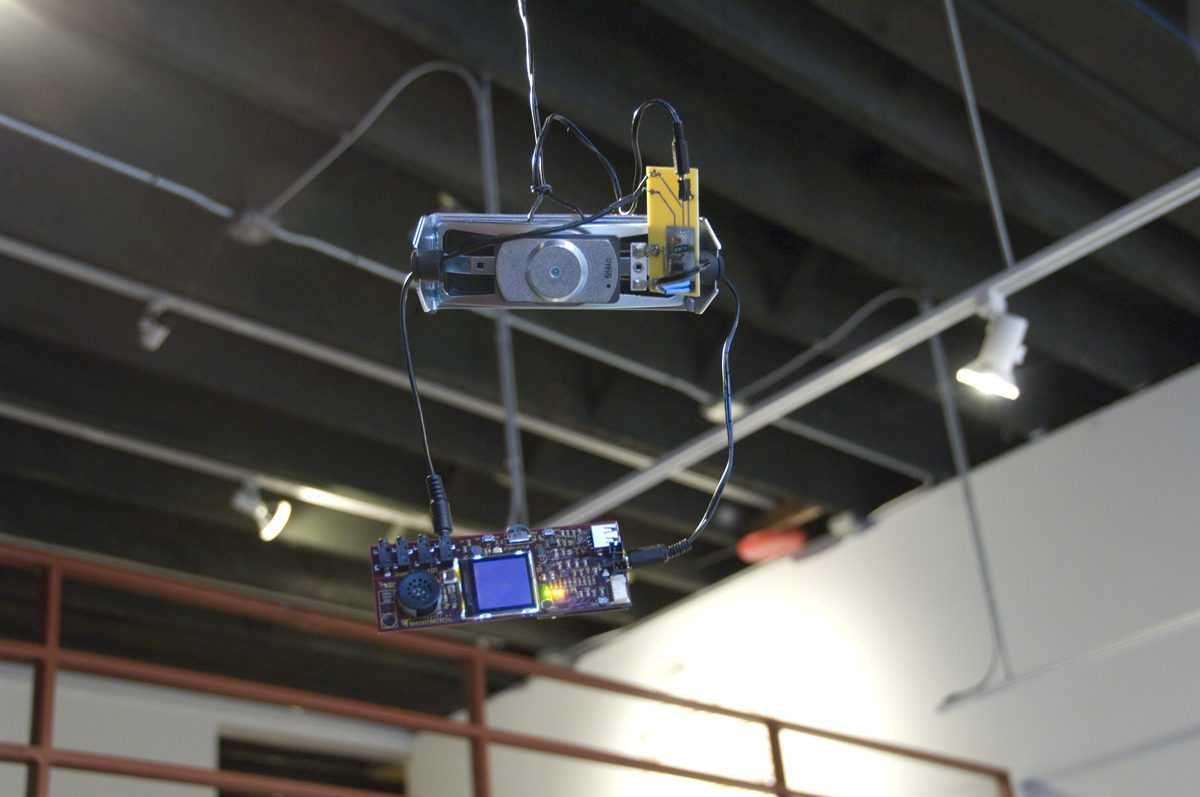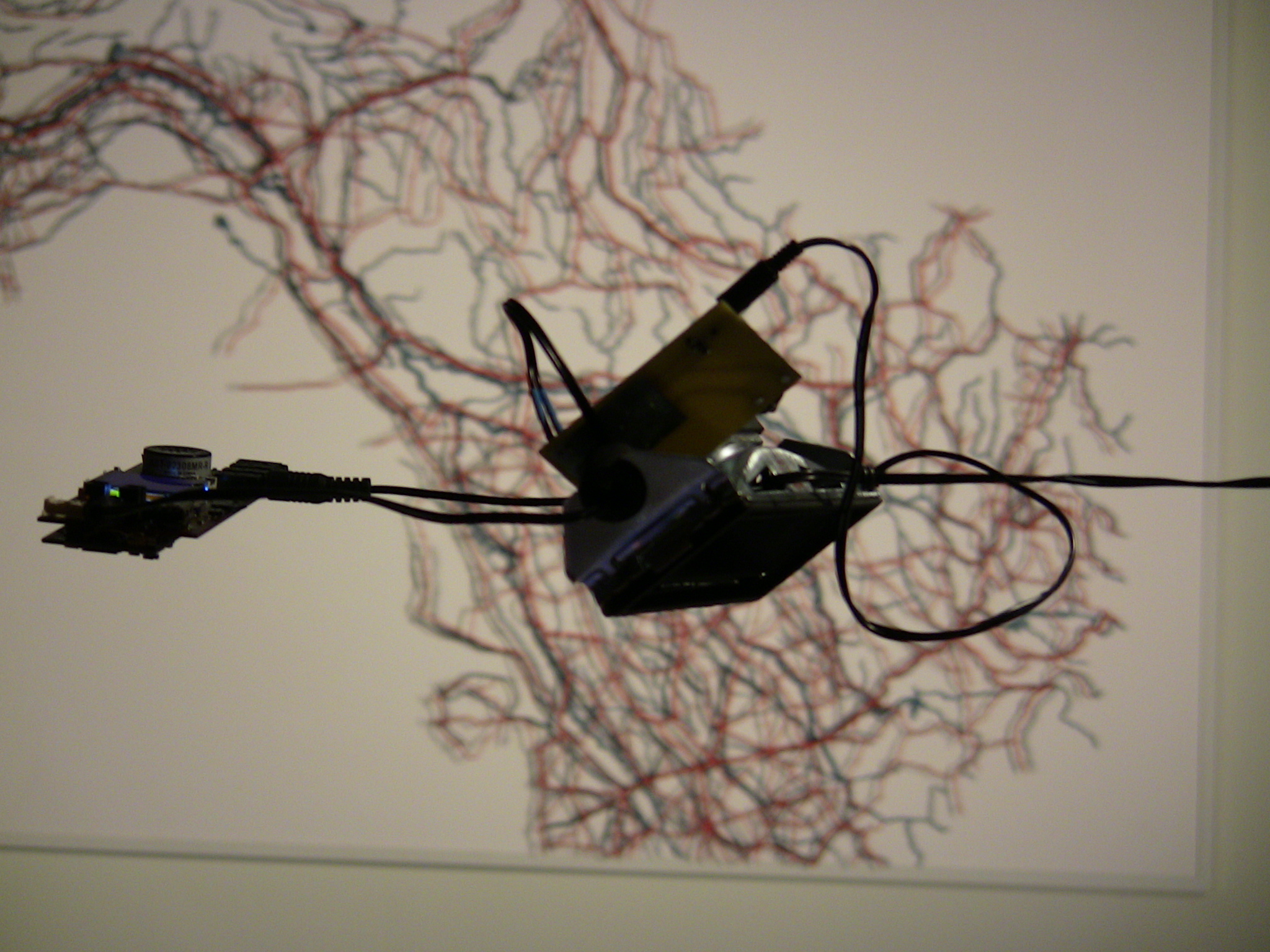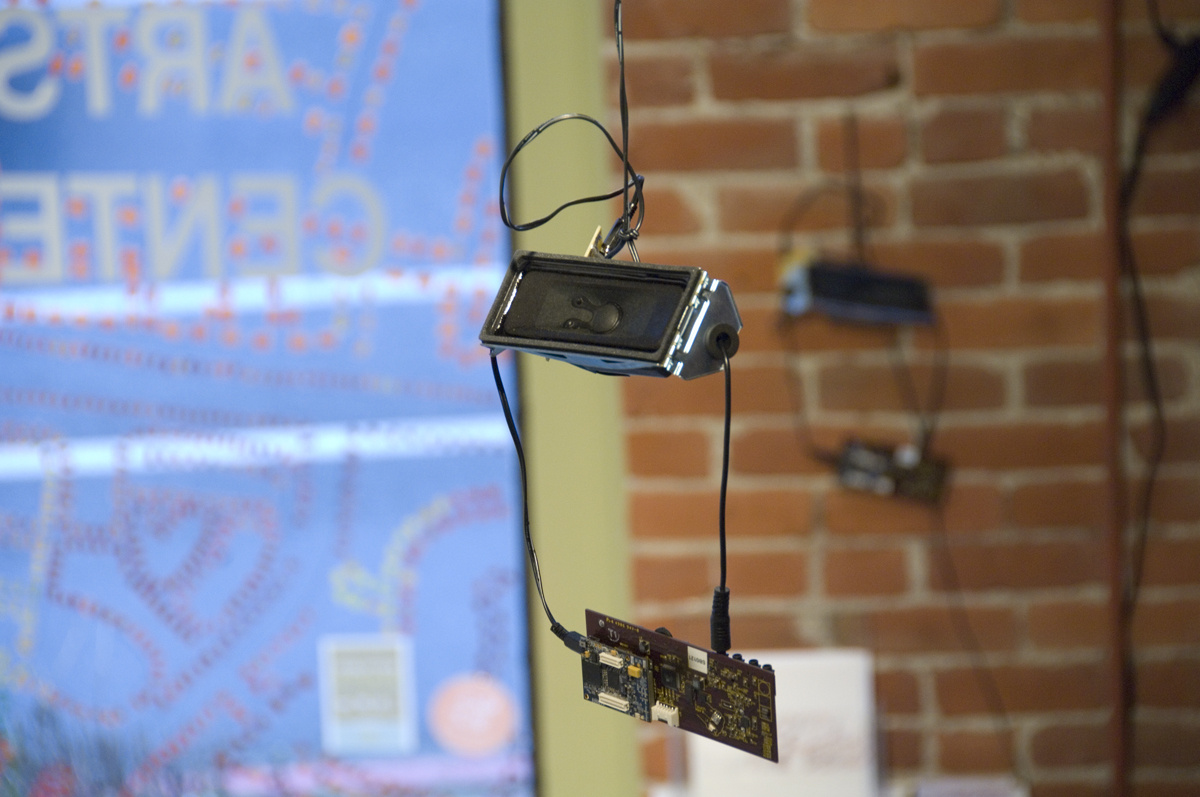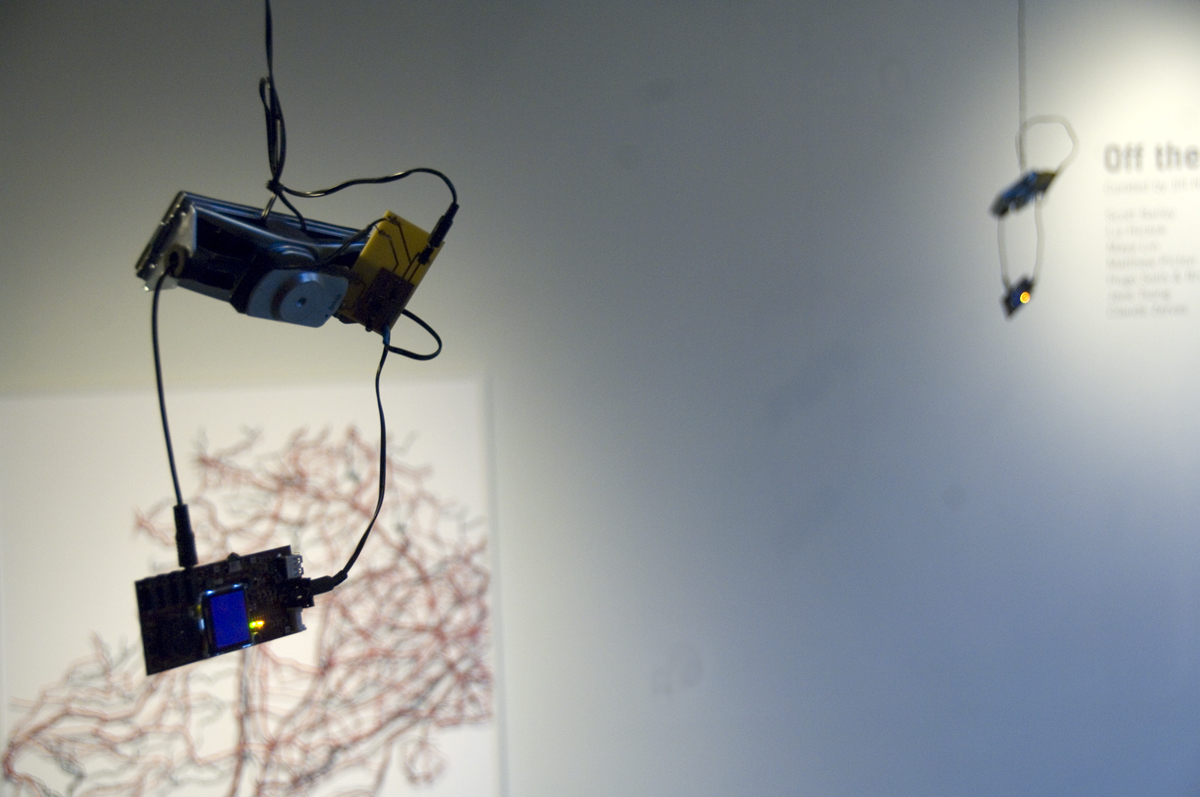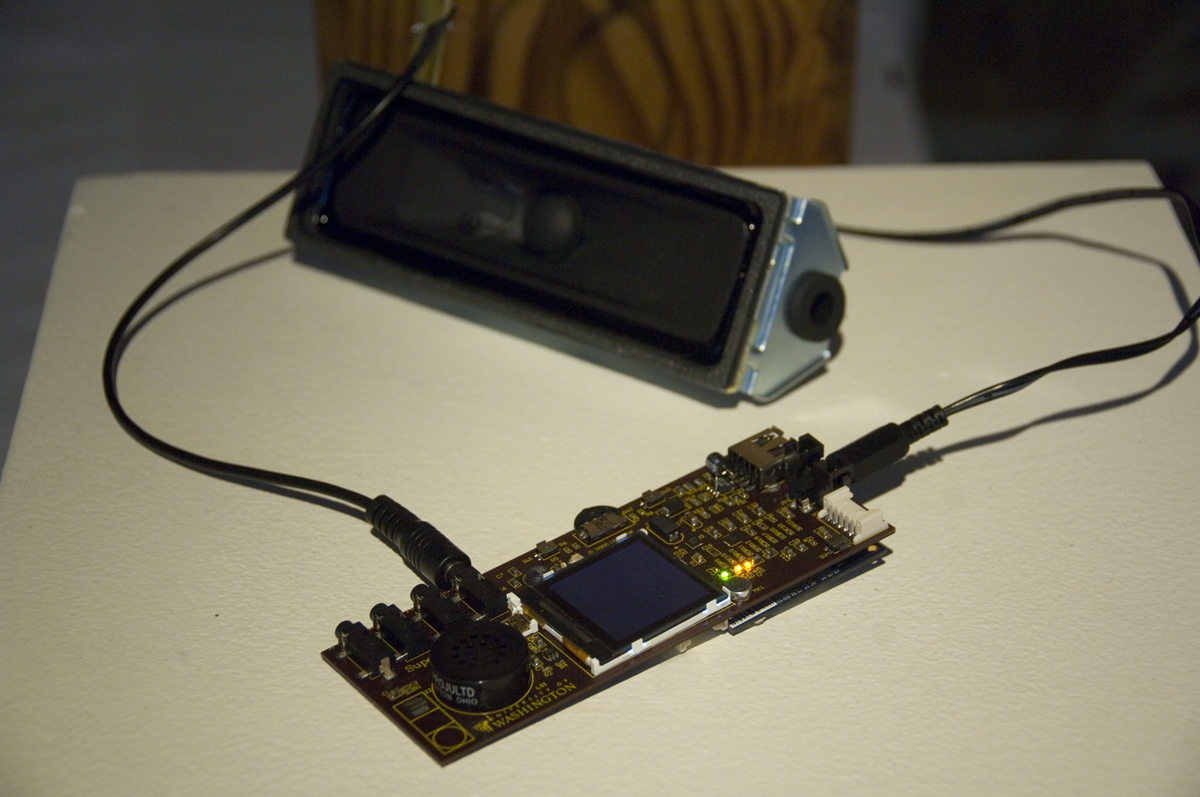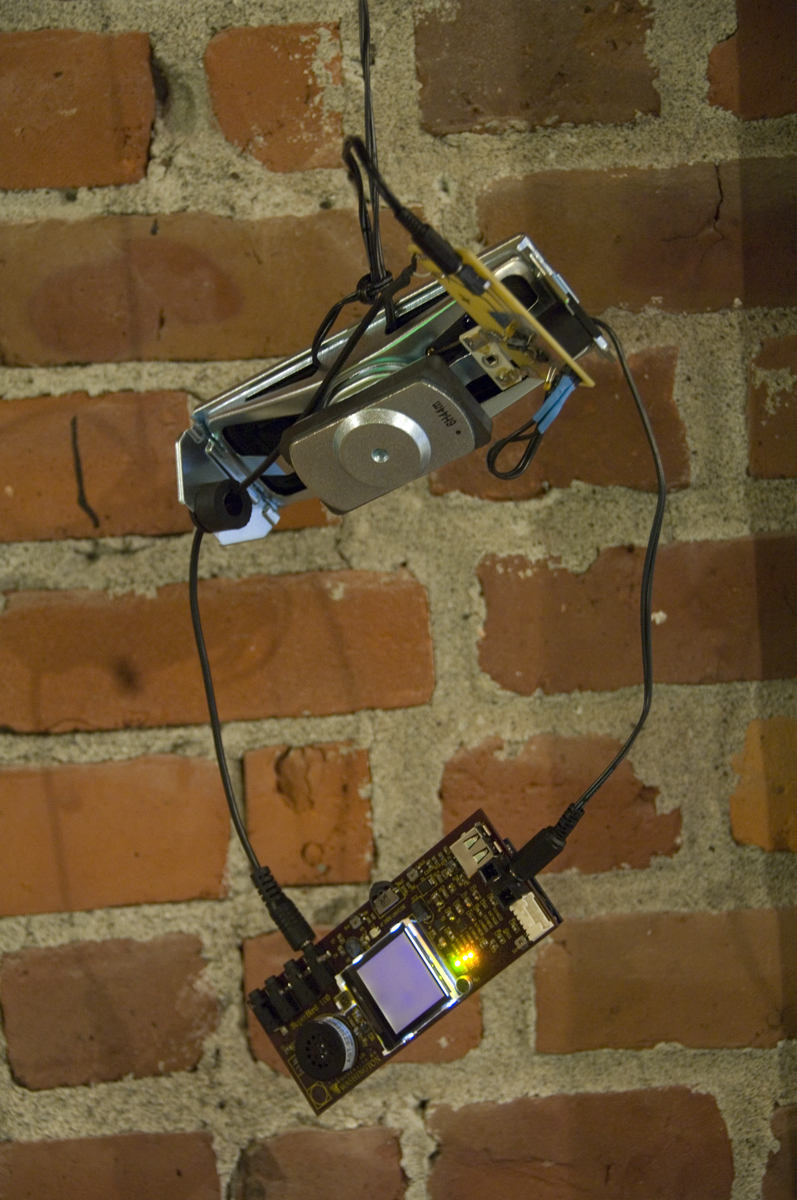Swarms

Swarm Intelligence describes the high-level behavior produced by the interaction of several decentralized non-hierarchical non-complex units of low-level intelligence with short-term local interaction. The traditional examples for describing swarm systems are insect colonies, flocks, and fish schools which overall behavior is more sophisticated than each of the members isolated.
Following this paradigm, this project models a swarm system employing a collection of electronic circuits called Superbirds. The Superbirds were designed and developed at the University of Washington by Bruce Hemingway and his team. Since their creation, they have been used in several courses as a means for teaching computer embedded systems and also as devices for artistic projects. Their set of capabilities such as audio synthesis, color screen, and radio communication makes them a suitable technology for exploring audiovisual interactive experiences.
For this project, these electronic devices are emulating organic creatures that communicate via radio establishing a virtual network along with the gallery. All the creatures are programmed with the same set of basic routines but their sonic and visual behavior at a given time depends on the interaction between their closest neighbors. In a similar way than organic creatures, these digital agents transit between different states such as sound and visual gestures production, listening and copying others materials, sleeping, and confronting other agents. Bruce Hemingway, Brian Mayton, Hugo Solis and students of the course “Software for Embedded Systems” at the University of Washington have developed this work. Bruce Hemingway and his team at the University of Washington developed the Superbird board over the last years. Their set of capabilities such as audio synthesis, color screen, and radio communication makes them a suitable technology for exploring audiovisual interactive experiences. The board contains an iMote microcomputer running Linux. The device has an audio port and is capable of real-time audio synthesis.
About twenty of these devices (each one attached to a small speaker) are spread along the Gallery hanging from the walls and celling. All of them are connected by radio creating a network. While the devices recreates the behavior of a swarm colony the audience listen to the acoustical result of the temporal evolution of the interaction. Because the devices measure the strength signal of the nearest neighbors the movement of the people in the gallery also influences the sonic result.
